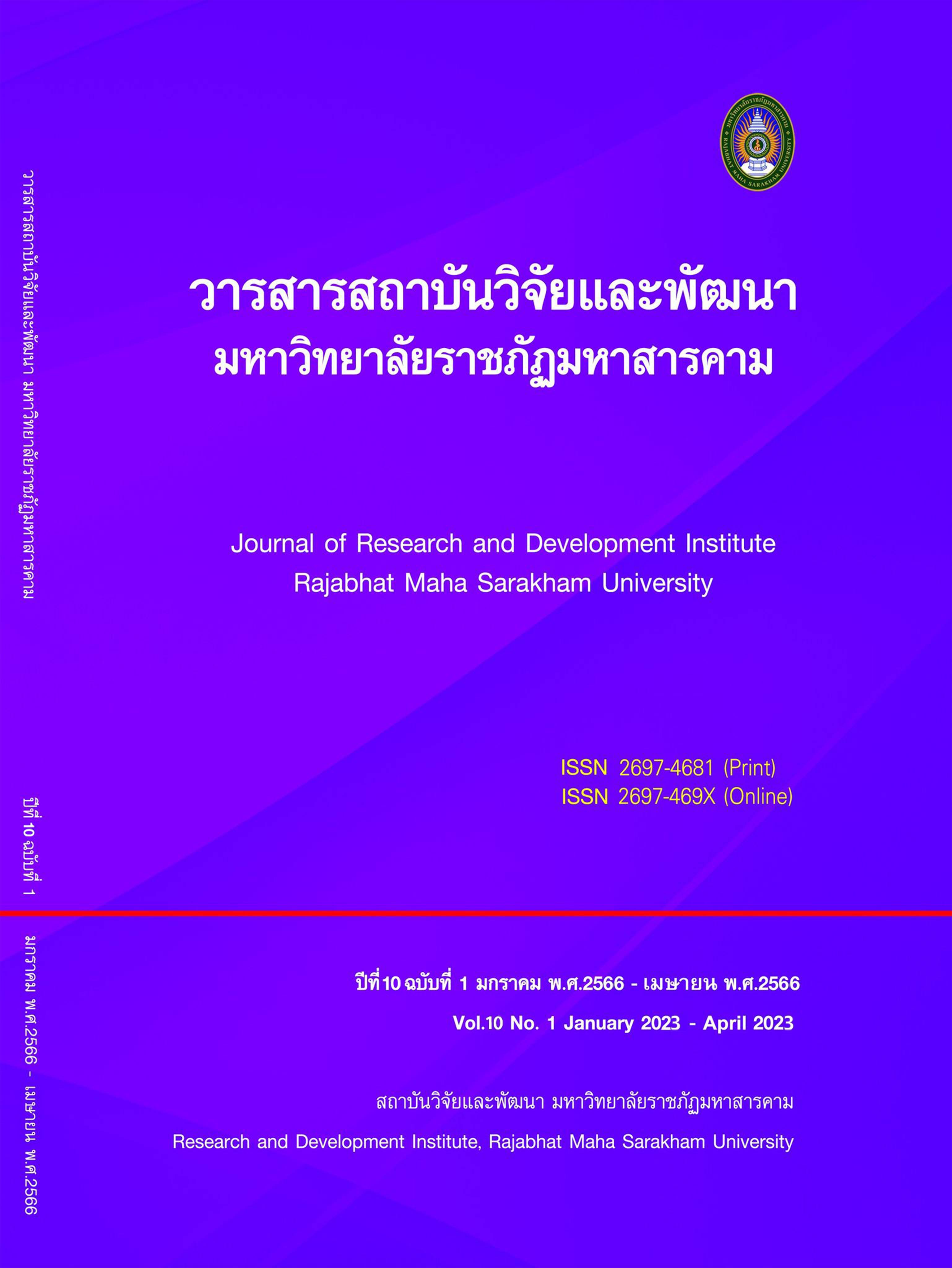The study learning ability and satisfaction of using paint program through think paire share technic of co-operative learning theory for Prathomsuksa 4
Keywords:
Think Pair Share Cooperative Learning Techniques, Learning Quotient, satisfiedAbstract
This research aimed 1) Compare your ability to learn to use Paint program for Prathomsuksa 4 pupils after learning by using a cooperative teaching style think Pair Share technique compared to the average of 70 per cent, and 2) to study the students' satisfaction with learning to use Paint program to use Paint program for Prathomsuksa 4 pupils. The research methodology used was an experimental research. The sample group included 12 Prathomsuksa 4 pupils, Bannongthourphap School in Semester 2, Academic Year 2021. The research instruments included (1) a learning management plan computer on the use Paint program for Prathomsuksa 4 pupils including 6 plans (2) Student Performance Assessment Form (3) computer learning achievement tests (4) a satisfaction questionnaire. The statistics used in analyzing the data were Mean, Standard Deviation, and Data analysis by t-test One Sample.
The results of the research were concluded that 1) ability to learn to use Paint program for Prathomsuksa 4 pupils after learning by using a cooperative teaching style think Pair Share technique compared to the average of 70 per cent at the statistical significance of .05 and 2) the satisfaction of studying to use Paint program to use Paint program for Prathomsuksa 4 pupils at a high level.
References
Aaron R. Byerley. (2002). Using Multimedia and “Active Learning” Techniques to Energize” an introductory engineering thermodynamics Class. Frontiers in Education Conference.
Academic Administration Group Ban Nong Thuapap School. (2019). Internal Quality Assessment Report Academic year 2019. Buriram: Ban Nong Thuapae School.
Areerat, W. (2006). The development of intelligent and participatory computer-assisted teaching model through computer network. Bangkok : King Mongkut's Institute of Technology North Bangkok.
Artwongsa, T. (2017). Developing scientific calculation skills by using peer techniques.A partner in combination with game play techniques of Mathayomsuksa 3 students. Pathum Thani : Rajamangala University of Technology Thanyaburi.
Chotthanakij, S. (2018). Thai reading comprehension activities series using SQ4R method of teaching reading together with friend-friend technique. For students in grade 1. Chonburi : Burapha University.
Chuboon, S. (2017). The effect of using the buddy technique together with graphic layouts on Thai reading comprehension ability of Prathomsuksa 5 students. Bangkok: Chulalongkorn University.
Jittawisutthikul, P. & Krutjon, S. (2018). Development of Learning Promotion with Augmented Reality Technology on Wide Angle and Functions and Connections within Computers. By organizing learning activities like a buddy to create a mind map. Technical Education Journal King Mongkut's University of Technology North Bangkok. Vol. 10, No. 2
Khaemmanee, T. (2005). Construction of ready-made lessons in 14 teaching methods for professional teachers. Bangkok : Chulalongkorn University.
Ministry of Education. (2008). Indicators and core learning contents of occupational learning and technology based on the basic education core curriculum, 2008. Bangkok: Bureau of Academic Affairs and Educational Standards. Office of the Basic Education Commission.
Panphachot, A. (2018). The Development of Learning Activities to Promote Mathematical Problem Solving Ability by Polya's Steps with a Partner Technique. Kamphaeng Phet : Kamphaeng Phet Rajabhat University.
Pholrat, P. (2017). The Development of Mathematics Problem Solving Ability and Mathematics Learning Achievement of Mathayomsuksa 3 Students on Inequalities Using the SSCS Model with a Partner Technique. Pathum Thani : Rajamangala University of Technology Thanyaburi.
Plongsanit, K. (2018). The results of using English learning activity package for communication, partner technique. For students in Grade 5. Maha Sarakham : Maha Sarakham Rajabhat University.
Praking, C. (2015). The Development of Web-Based Lessons Based on Synectic Teaching Processes with Peer-Based Learning Techniques. that promotes creativity Animation creation Secondary school grade 2. Maha Sarakham : Maha Sarakham Rajabhat University.
Susan Ledlow. (2001). Using Think-Pair-Share in the College Classroom. Arizona State University.
Tanphiphat, T. (1996). Principles of design and construction of websites for teaching and learning. Bangkok : Arun Printing.
Wattanawaha, N. (1992). Models and strategies for learning management to develop thinking skills. Nakhon Pathom : Silpakorn University.
Downloads
Published
How to Cite
Issue
Section
License
Copyright (c) 2023 จินตนา กุดดอน

This work is licensed under a Creative Commons Attribution-NonCommercial-NoDerivatives 4.0 International License.
Articles that are published are copyrighted by the authors of the articles







